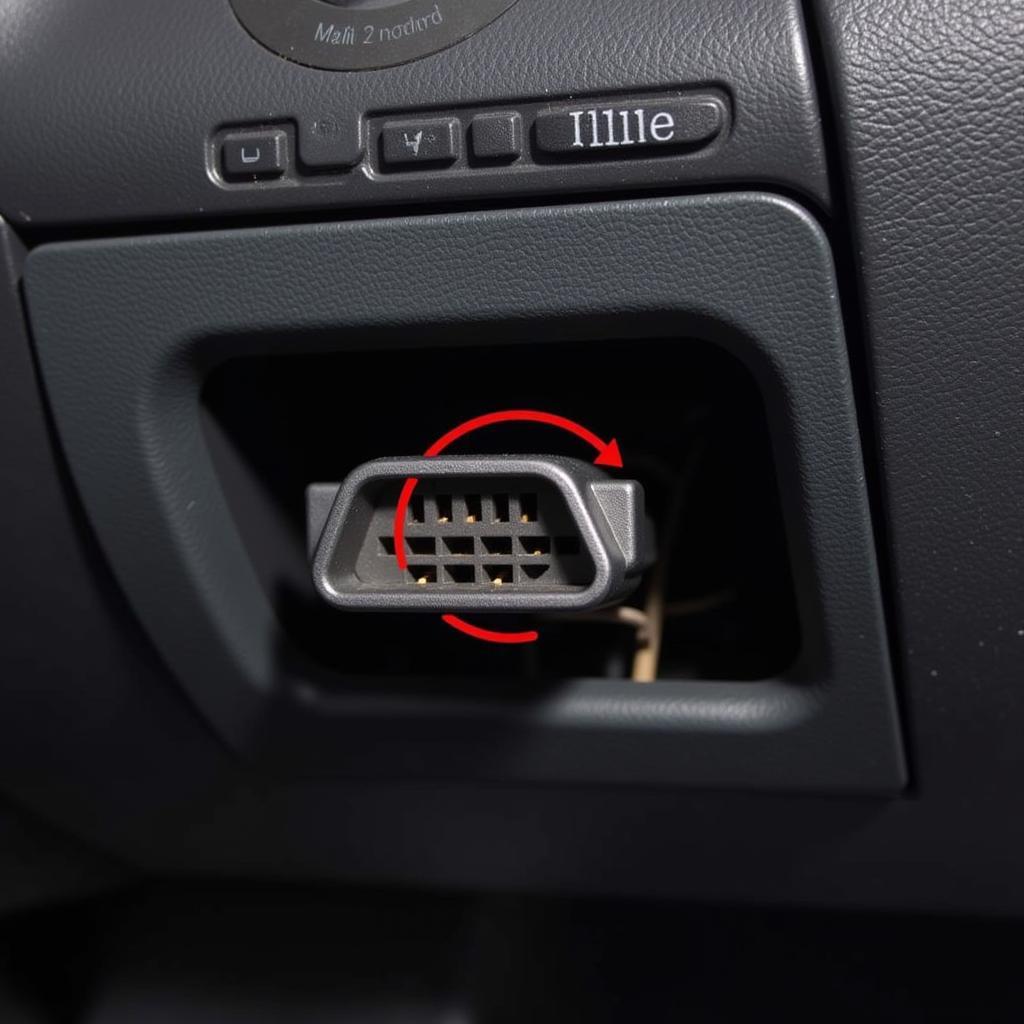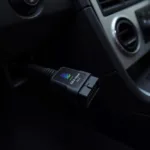OBD2 vehicles have become the standard in the automotive industry, playing a crucial role in diagnostics and maintenance. But what exactly are OBD2 vehicles, and how do they impact car owners and the industry as a whole? This comprehensive guide delves into the world of OBD2 vehicles, providing valuable insights for enthusiasts and professionals alike.
What Defines an OBD2 Vehicle?
OBD2, short for On-Board Diagnostics, refers to a standardized system implemented in vehicles to monitor and report on engine and emissions performance. An OBD2 vehicle, therefore, is any car or light truck manufactured after 1996 in the United States (1994 for some manufacturers) and after 2001 in Europe that adheres to the OBD2 standard.
These vehicles are equipped with an OBD2 port, typically located under the dashboard on the driver’s side, which allows access to the vehicle’s computer system. This port serves as a gateway for retrieving diagnostic trouble codes (DTCs), monitoring real-time engine data, and accessing a wealth of information related to the vehicle’s performance.
The Evolution and Significance of OBD2 Vehicles
The implementation of OBD2 standards marked a significant leap forward in automotive technology. Prior to OBD2, vehicle diagnostics were far less standardized, making it challenging for mechanics to accurately diagnose and repair issues. The introduction of a universal system streamlined the process, enabling technicians to access critical vehicle data through a single standardized port using an OBD2 scanner.
This standardization has had a profound impact on the automotive industry:
- Improved Diagnostics: OBD2 vehicles provide detailed DTCs, pinpointing the specific area of concern within the vehicle’s systems, leading to faster and more accurate repairs.
- Enhanced Emission Control: OBD2 regulations have played a vital role in reducing harmful emissions from vehicles, contributing to a cleaner environment.
- Empowered Car Owners: With the advent of affordable OBD2 scanners, car owners can now access and interpret basic diagnostic information themselves, allowing for proactive maintenance and potentially saving on costly repair bills.
The Role of OBD2 Scanners in Modern Vehicles
OBD2 scanners are essential tools for anyone interacting with OBD2 vehicles, whether they’re professional mechanics or car enthusiasts. These devices connect to the vehicle’s OBD2 port, acting as a bridge between the vehicle’s computer and the user.
OBD2 scanners vary in complexity and functionality, ranging from basic code readers to advanced professional-grade tools. However, they all share the core capability of retrieving and displaying DTCs stored in the vehicle’s computer.
Key Features and Benefits of OBD2 Scanners:
- Read and Clear Diagnostic Trouble Codes (DTCs): Easily identify the source of warning lights on the dashboard by retrieving and understanding DTCs.
- View Live Engine Data: Monitor various engine parameters such as speed, RPM, coolant temperature, oxygen sensor readings, and more in real-time.
- Perform Emissions Readiness Tests: Determine if the vehicle’s emission control systems are functioning correctly, which is crucial for passing emissions inspections.
- Access Vehicle-Specific Information: Depending on the scanner’s capabilities, users can access information like VIN, mileage, and other vehicle-specific parameters.
Conclusion
OBD2 vehicles and the accompanying diagnostic technology have revolutionized the way we interact with our cars. Understanding the basics of OBD2 systems and the capabilities of OBD2 scanners empowers car owners and professionals to diagnose issues accurately, maintain their vehicles proactively, and contribute to a cleaner environment. As automotive technology continues to advance, the role of OBD2 systems will undoubtedly continue to evolve, bringing even more sophisticated diagnostics and data-driven insights to the forefront.
FAQs About OBD2 Vehicles
1. Are all cars manufactured after 1996 OBD2 compliant?
Yes, all gasoline-powered cars and light trucks manufactured in the United States after 1996 are required to be OBD2 compliant.
2. Can I use any OBD2 scanner on any OBD2 vehicle?
While all OBD2 scanners can connect to the standardized port, some scanners may offer additional features or vehicle-specific functionalities.
3. Will clearing DTCs with an OBD2 scanner fix the problem?
Clearing DTCs only erases the codes from the vehicle’s memory. It does not address the underlying mechanical issue.
4. Do I need to be a mechanic to use an OBD2 scanner?
Basic OBD2 scanners are user-friendly and can be utilized by anyone with a basic understanding of car maintenance.
5. Where can I find more information about my specific OBD2 vehicle?
Your vehicle’s owner’s manual will contain valuable information specific to your car’s OBD2 system.
Do you have more questions about OBD2 vehicles or need personalized assistance? Our dedicated team at OBDFree is available 24/7 to provide expert guidance. Contact us via WhatsApp at +1(641)206-8880 or email us at [email protected]. We’re here to help you navigate the world of OBD2 technology!


